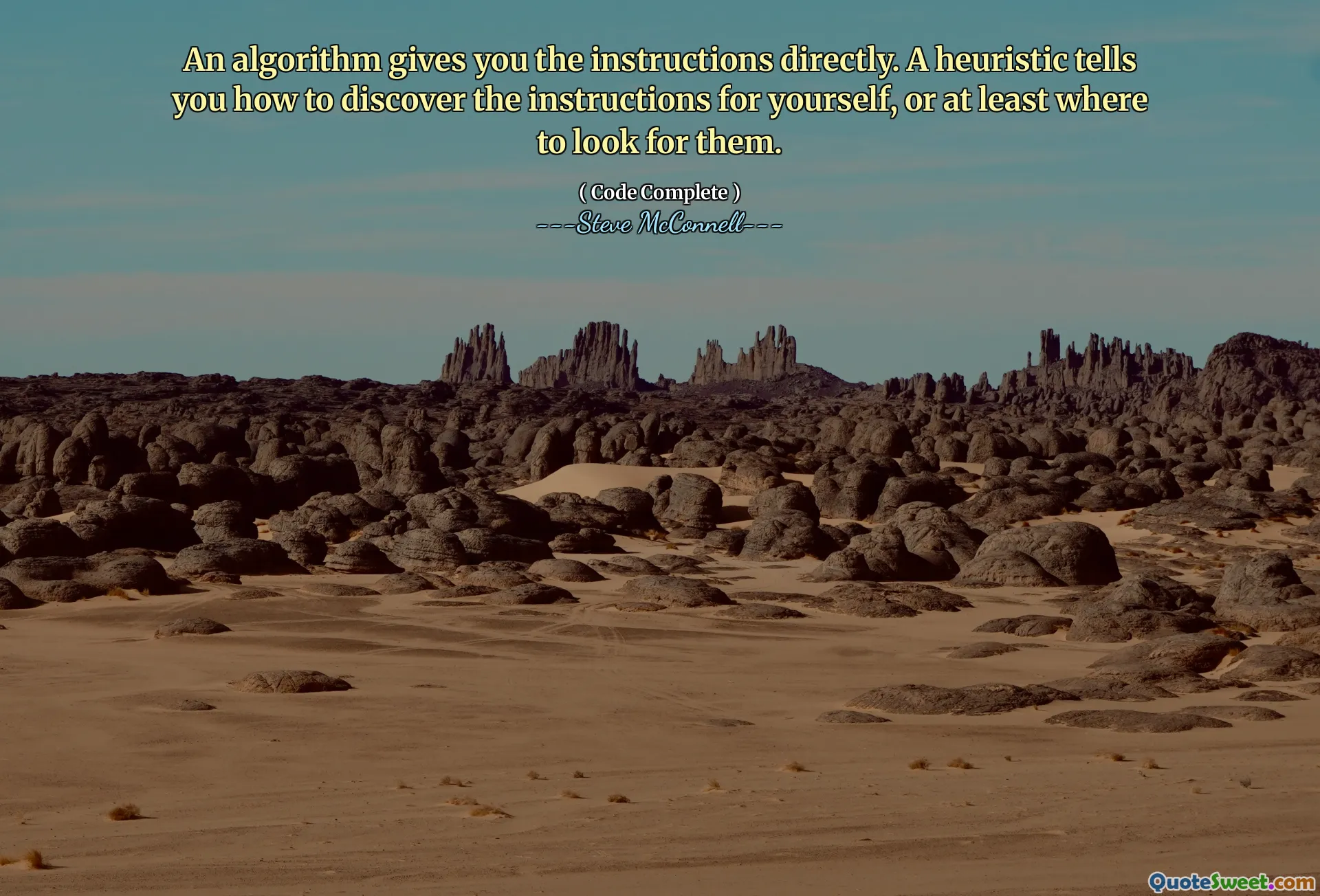
An algorithm gives you the instructions directly. A heuristic tells you how to discover the instructions for yourself, or at least where to look for them.
This quote elegantly captures the distinction between two fundamental approaches to problem-solving and learning, particularly within the domain of software development and computer science. An algorithm is like a detailed recipe or a set of explicit instructions: follow the steps as given, and you arrive at the solution. It embodies determinism and predictability, making it indispensable for many technical tasks that require precision and repeatability. On the other hand, a heuristic serves more as a guiding principle or a rule of thumb. It's less about precise instructions and more about fostering a way of thinking or an investigative mindset that allows one to find the solutions independently.
What resonates deeply is how heuristics empower creativity and adaptability. They encourage intellectual exploration rather than rote execution. When faced with complexities or novel problems where algorithms aren’t readily available or are impractical, heuristics enable developers to navigate through ambiguous or unknown territory. This echoes the nature of much software development work described in Code Complete, where rigid solutions don’t always fit the messy, real-world situations programmers encounter.
In essence, the heuristic approach cultivates problem-solving skills that are more robust in the long run, because they develop our ability to understand problems deeply and seek solutions actively. This quote highlights a powerful mindset shift from passively applying pre-crafted solutions to actively discovering and crafting solutions based on critical thinking. As Steve McConnell emphasizes in his book, balancing the use of both algorithms and heuristics allows software engineers to be both efficient and innovative, making them better equipped to tackle complex software construction challenges.







